In this blog post, I will discuss how to lock all taskbar settings on Windows Endpoints with Microsoft Intune.
Locking all taskbar settings in Windows ensures a consistent user experience by preventing accidental modifications.
Locking taskbar settings simplifies system management and enhances security by limiting user interaction with critical system features. This approach can be valuable in enterprise environments, where maintaining a consistent desktop experience is essential for productivity and minimizing user error.
Configuring “Lock All Taskbar Settings” via Microsoft Intune allows IT Administrators to manage taskbar settings across all enrolled devices centrally. This is useful in ensuring a consistent experience and preventing users from making changes that could affect system performance or productivity.
To implement this, administrators can create a Device Configuration Profile in Intune and choose Administrative Templates under Windows 10 and later. Within the profile, navigate to the Start Menu and Taskbar and enable the “Lock all taskbar settings” option. Once deployed, these settings will apply automatically to all targeted devices, preventing users from modifying their taskbar.

Table of Contents
Advantages of Lock All Taskbar Settings
Locking all taskbar settings offers several advantages, particularly in managed or multi-user environments. Below are a few of the essential points.
This feature is especially useful in shared environments or administrators managing multiple systems. By locking the taskbar settings, users can’t resize, move, or customize the taskbar layout, ensuring uniformity across devices and reducing troubleshooting caused by unintentional changes.
| Advantages | Description |
|---|---|
| Prevents Unwanted Changes | Locking the taskbar ensures users cannot resize, move, or customize it, maintaining a stable and familiar workspace. This minimizes accidental disruptions caused by users adjusting settings. |
| Improved Focus and Productivity | By locking the taskbar in a predefined layout, distractions from constant modifications are minimized. Users can focus on their tasks without worrying about misconfigured or missing taskbar items, leading to a more streamlined workflow. |
| Easier Troubleshooting and Management | For IT Administrators, locked taskbar settings help standardize system setups across multiple machines, making it easier to troubleshoot and manage user configurations. This reduces time spent on support related to customization issues. |
- Easy Method to Hide Search on Windows 11 Taskbar Using Intune Policy Settings Catalog
- Unpin Microsoft Store Apps from Taskbar with Intune | Do Not Allow Pinning Store App to the Taskbar
- Enable Show Desktop Button on Windows 11 Taskbar
Create Configuration Policy to Lock All Taskbar Settings on Windows Endpoints
Follow the steps below to create a configuration policy to Lock All Taskbar Settings using Microsoft Intune. First, sign in to the Microsoft Intune Admin Center using your administrator credentials.
- Navigate to Devices > Windows > Manage Devices > Configuration
- Click on +Create > +New Policy
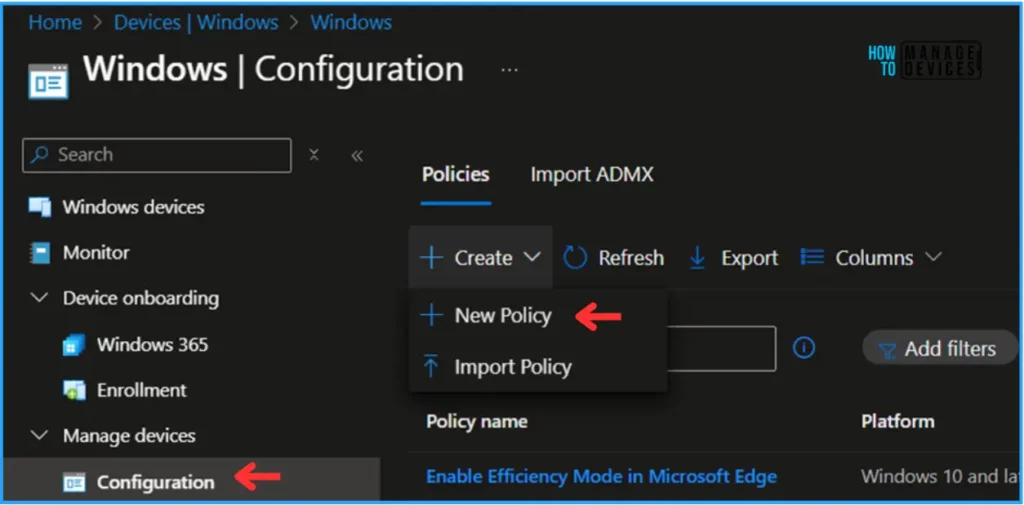
In the next step, we can create a new Configuration Profile from scratch. First, we need to provide the options mentioned below.
- Platform: Windows 10 and later
- Profile type: Settings catalog
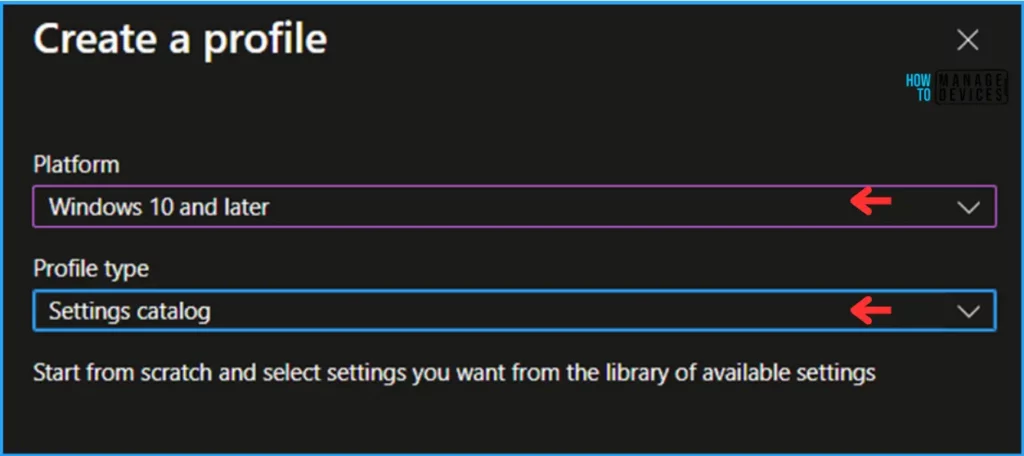
We can name the configuration profile “Lock All Taskbar Settings” on the Basics details page. If needed, briefly describe the policy’s use. Here, I gave Disable All Taskbar Settings on Windows 10/11 and clicked Next.
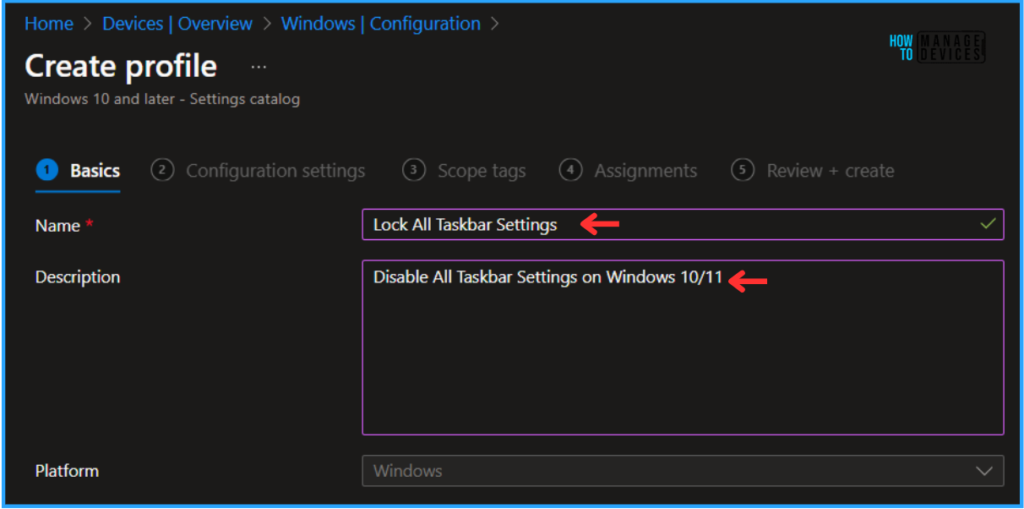
We can now add the required settings to the Configuration Settings pane. To do so, click +Add settings in the bottom left corner of the page. With the settings catalog, you can choose which settings to configure. Click on Add Settings to browse or search the catalog for the settings you want to configure.
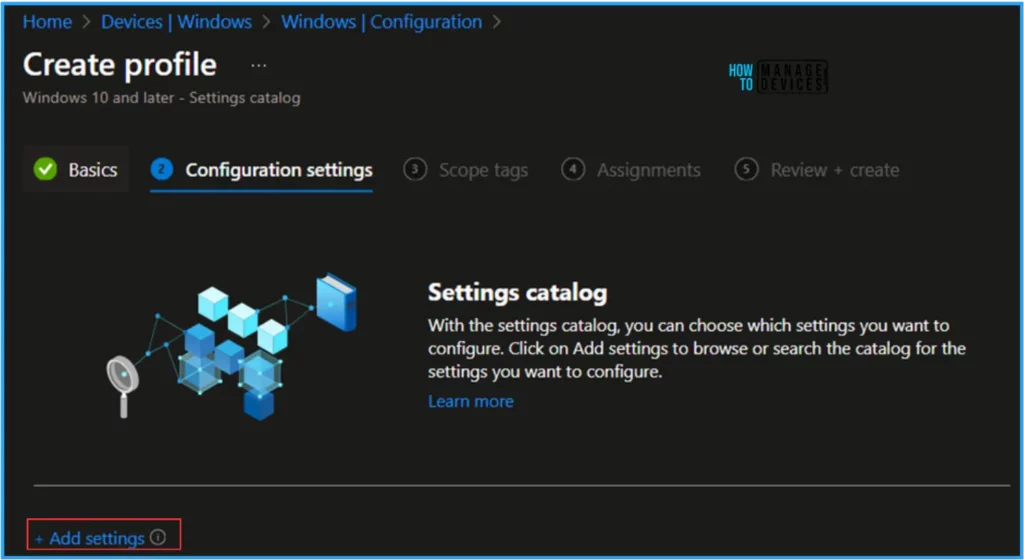
Search for “Lock All Taskbar” as a keyword. This will help you find the correct policy based on our current needs. You can see the browse by category as Administrative Templates\Start Menu and Taskbar. Click that to find “Lock all taskbar settings (User)” Select the check option and close the Settings picker pane.
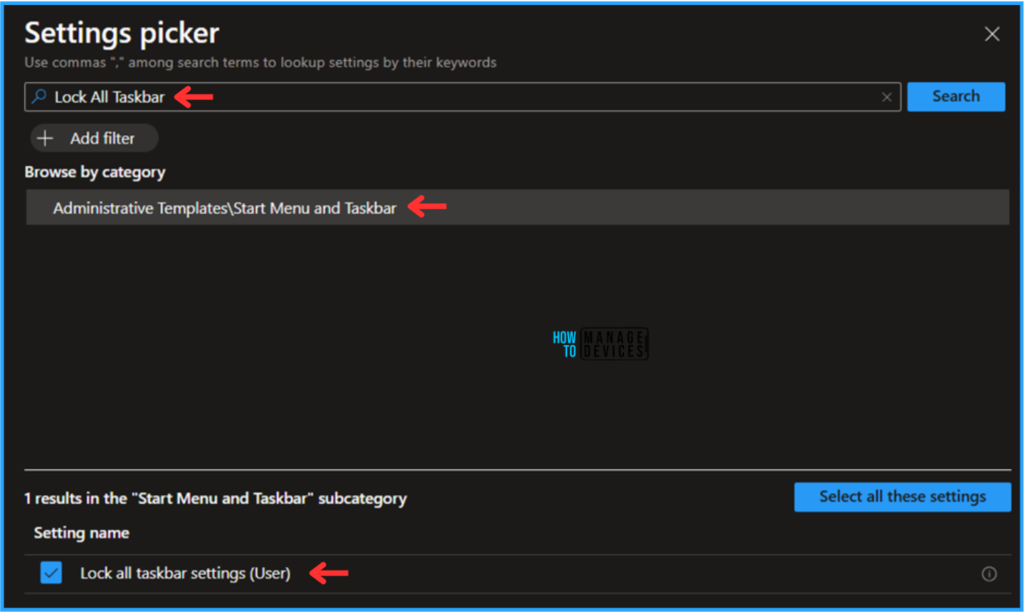
Once we return to our Configuration settings pane, Enable the Lock all taskbar settings (User) option and click Next.
Note! This policy setting allows you to lock all taskbar settings. If you enable this policy setting, the user cannot access the taskbar control panel. The user is also unable to resize, move or rearrange toolbars on their taskbar. If you disable or do not configure this policy setting, the user will be able to set any taskbar setting that is not prevented by another policy setting. Learn more

On the next page, Leave the Scope tags as Default. If your tenant has any custom scope tags, you can select them based on your policy requirements.
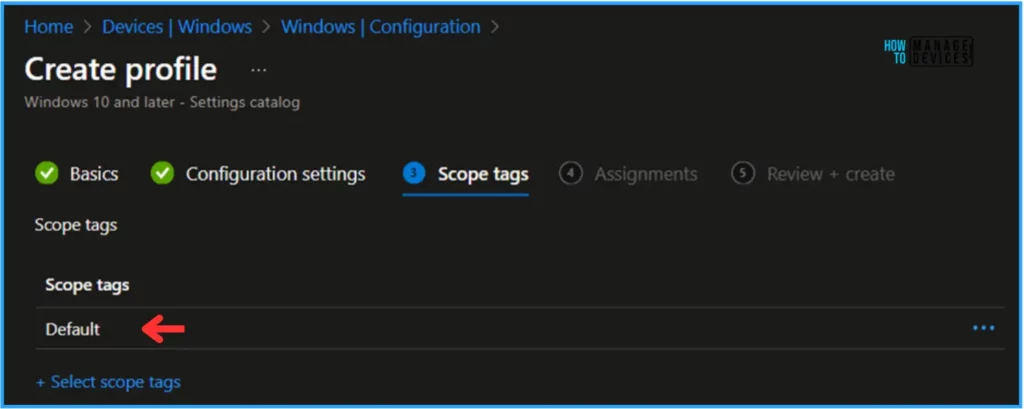
Click on Next. Here, I am assigning the configuration policy to HTMD – Test Computers. To do that, click Add Groups and select a required device group under the Included Groups option. I am not using any Filter in this example, and the Excluded Groups option was also left blank. You can assign this policy to User Groups.
Note! You cannot mix user and device groups across include and exclude when excluding groups.
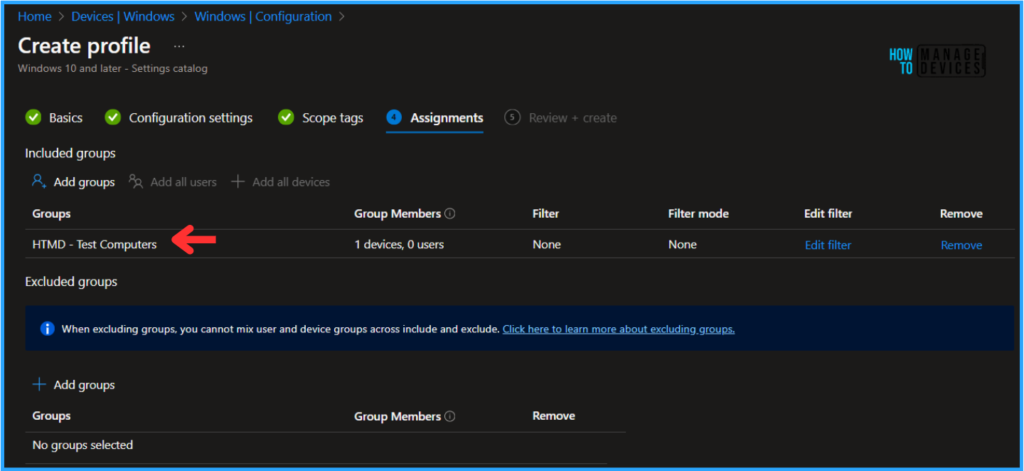
On the Review + Create page, carefully review all the settings you’ve defined for the “ Lock All Taskbar Settings” configuration. Select Create to deploy the policy once you’ve confirmed everything is correct.
- How to Set App Defaults using Intune | Export the Default XML File & Encode it in Base64 format
- Easy Way to Hide Task View Button with Intune
- Quick Fix to your Windows OS Issues with Detection and Remediation Scripts with Intune
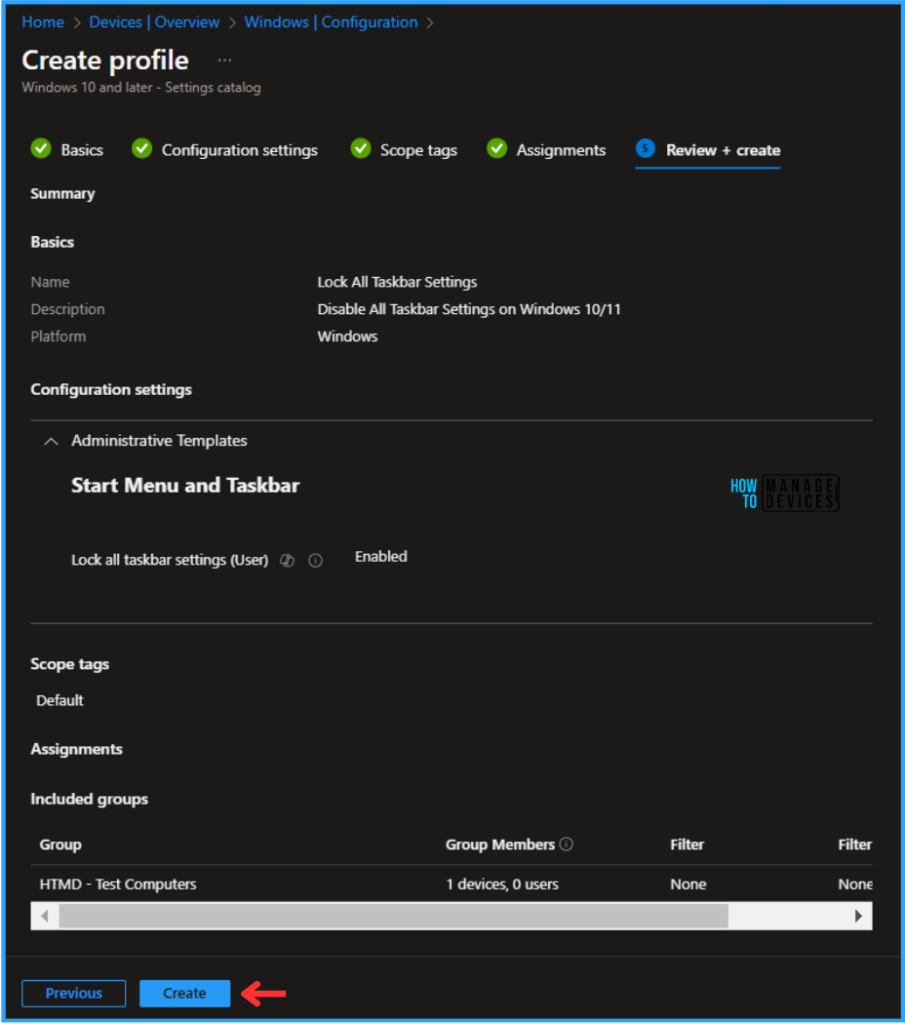
Monitor the Lock All Taskbar Settings Policy Deployment
This configuration policy has been deployed to the HTMD – Test Computers device group, a Microsoft Entra ID group. Once the device is synced, the policy will take effect immediately. To monitor the policy deployment status from the Intune Portal, follow the steps below.
- Navigate to Devices > Windows > Configuration > Search for the “Lock All Taskbar Settings” configuration policy.
- Under the Device and user check-in status, you can see the policy’s deployment status.
To view the report in detail, click on the View Report option. The report will display the targeted Device’s name, Logged-in user’s name, check-in status, Filter, and the Last report modification time.
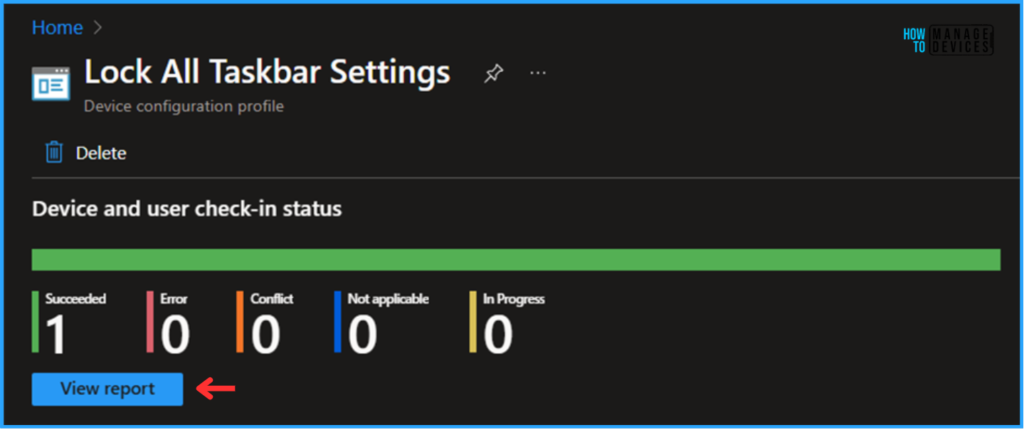
End User Experience – Lock All Taskbar Settings Configuration Policy
It’s time to check whether the Lock All Taskbar Settings worked. To check that, log in to one of the policy-targeted devices.
- Navigate to Settings > Personalization > Taskbar > Taskbar behaviors
This will take you through the Taskbar alignments, badging, automatically hind, and multiple displays. We can see that most options are in grade out or state. The user doesn’t have permission to change all of these options. The conclusion is our policy is working perfectly fine!

Connect with HTMD Communtiy
Join the LinkedIn Page and Telegram group to get the latest step-by-step guides and news updates. Join our Meetup Page to participate in User group meetings. Also, Join the WhatsApp Community to get the latest news on Microsoft Technologies. We are there on Reddit as well.
Author
Vaishnav K has over 11 years of experience in SCCM, Device Management, and Automation Solutions. He writes and imparts knowledge about Microsoft Intune, Azure, PowerShell scripting, and automation. Check out his profile on LinkedIn.
